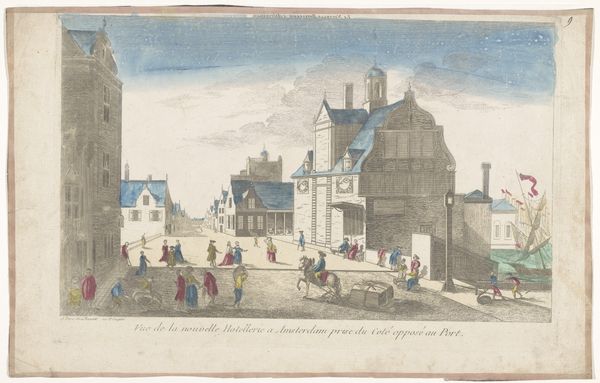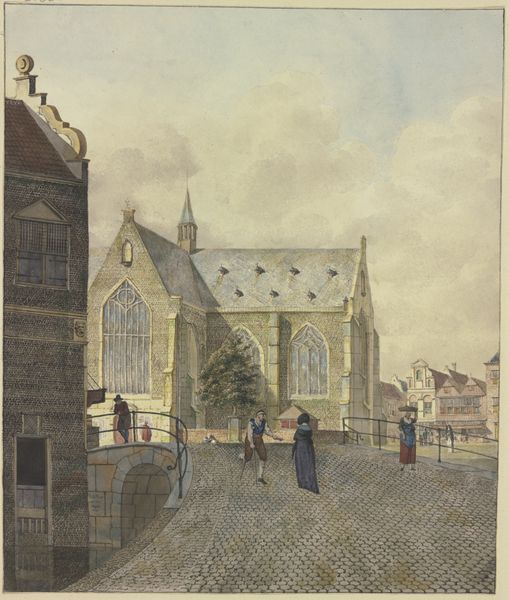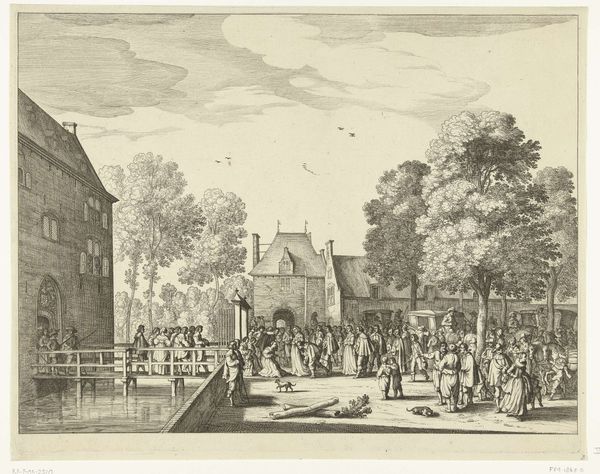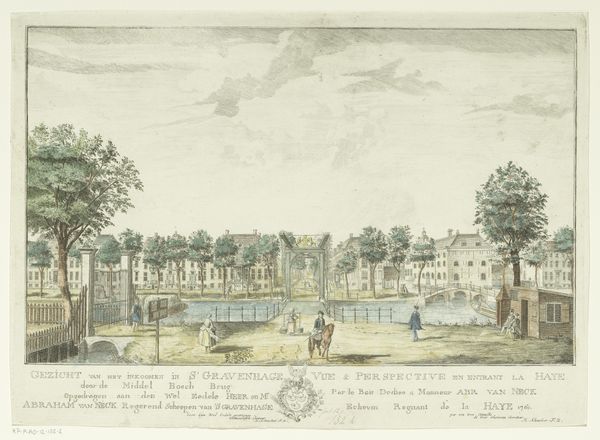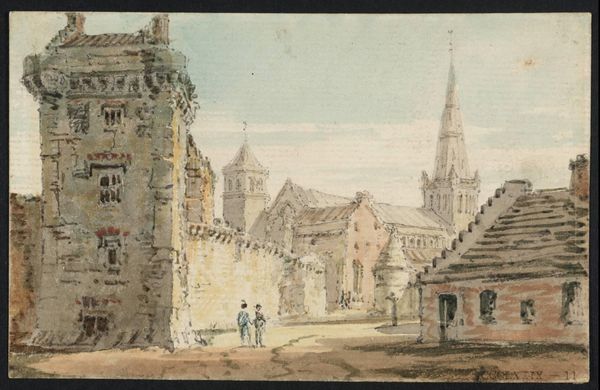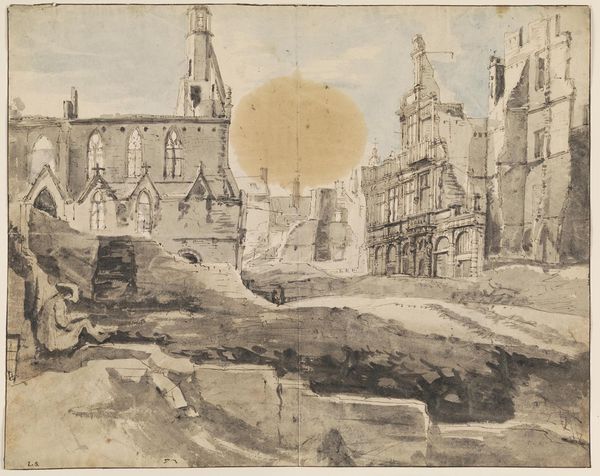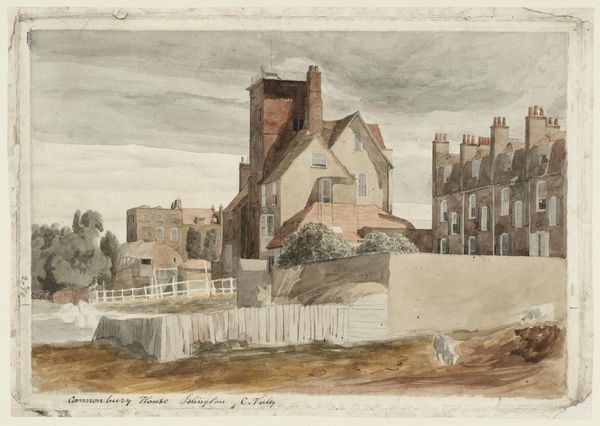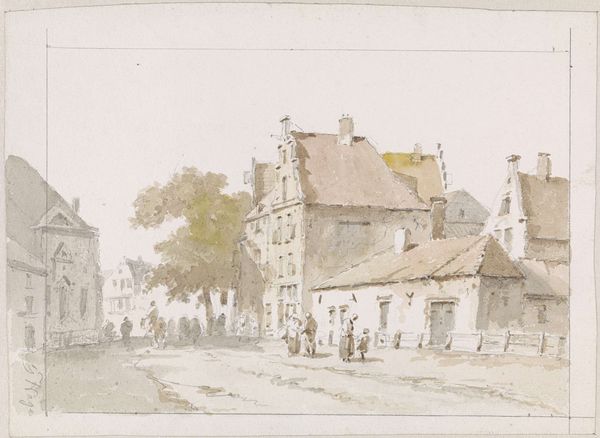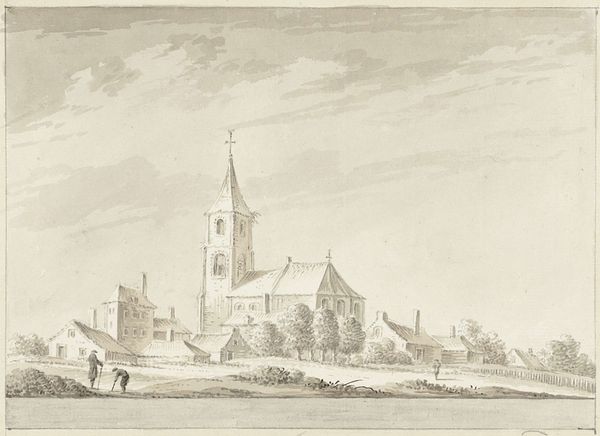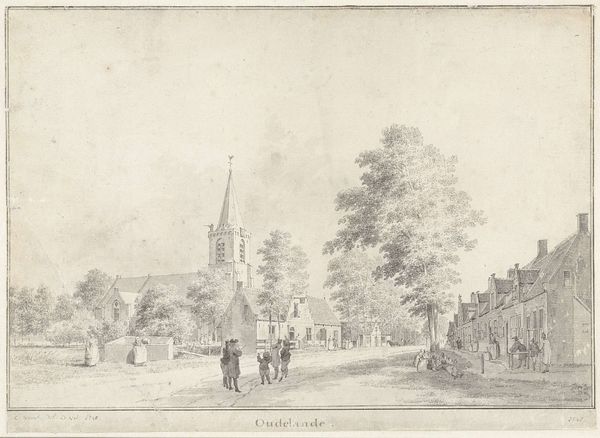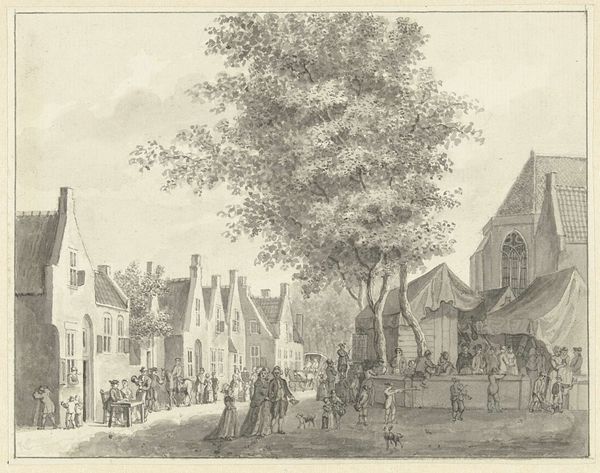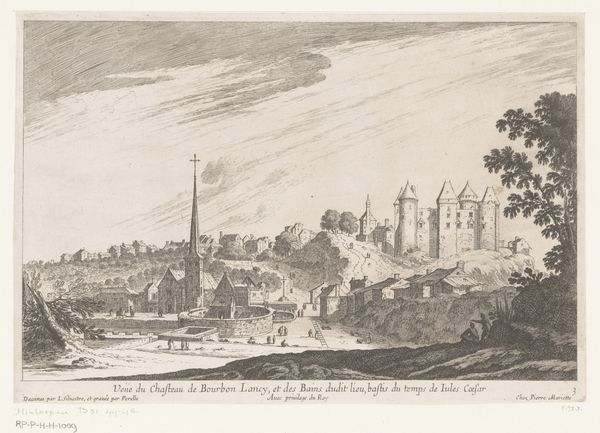
painting, watercolor
#
baroque
#
painting
#
watercolor
#
cityscape
#
watercolour illustration
#
genre-painting
#
history-painting
#
watercolor
Dimensions: height 23.5 cm, width 19 cm
Copyright: Rijks Museum: Open Domain
Curator: Here we have an anonymous watercolor painting, estimated to have been created between 1710 and 1720, depicting "The Execution of Van Oldenbarnevelt." Editor: My initial reaction is one of subdued horror, despite the almost quaint style. The soft watercolors lend a strange distance to such a brutal public spectacle. The sheer mass of people, rendered with such meticulous strokes, is quite arresting. Curator: It's a chillingly detached perspective, isn’t it? Let’s remember that Johan van Oldenbarnevelt was a pivotal figure in Dutch history, essentially the leader of the Dutch Republic for decades. His execution in 1619 was a highly controversial political act orchestrated by Prince Maurits. Editor: And look at how the anonymous artist uses the medium. The delicate watercolor belies the heaviness of the subject matter. The texture of the buildings and the slight variations in color applied to the clothing demonstrate an attention to detail which feels almost…celebratory, in its meticulous application. It reminds me of the intricate work of embroiderers and weavers depicting historical events through their craft, softening their context. Curator: I agree. Thinking about this from a cultural perspective, it represents the painful fractures within Dutch society at the time – religious tensions, political power struggles. This piece prompts questions about social hierarchy, political accountability, and collective memory. Van Oldenbarnevelt’s legacy continues to be debated, making this depiction a loaded artifact. Editor: Absolutely, and I’m drawn to thinking about the artist’s choice to represent this event with watercolor; paper would be far more economical to source than oil and canvas, so to see such precision enacted using cheaper materials speaks to how deeply such executions must have reverberated throughout various classes and populations. And you mentioned those fractures – perhaps the painting served some propagandistic function for its intended owner, solidifying their socio-political standing in the Dutch state. Curator: I find myself thinking about who commissioned this, what their positionality was within the fractured society that you mentioned, and what that act meant in relation to power. And that we are standing in front of it now speaks to its place in an ongoing cultural, historical dialogue. Editor: Precisely. It is powerful to consider this anonymous work now and trace its complex relationship between subject and materials—revealing that its implications extend far beyond a simple depiction of execution.
Comments
No comments
Be the first to comment and join the conversation on the ultimate creative platform.
